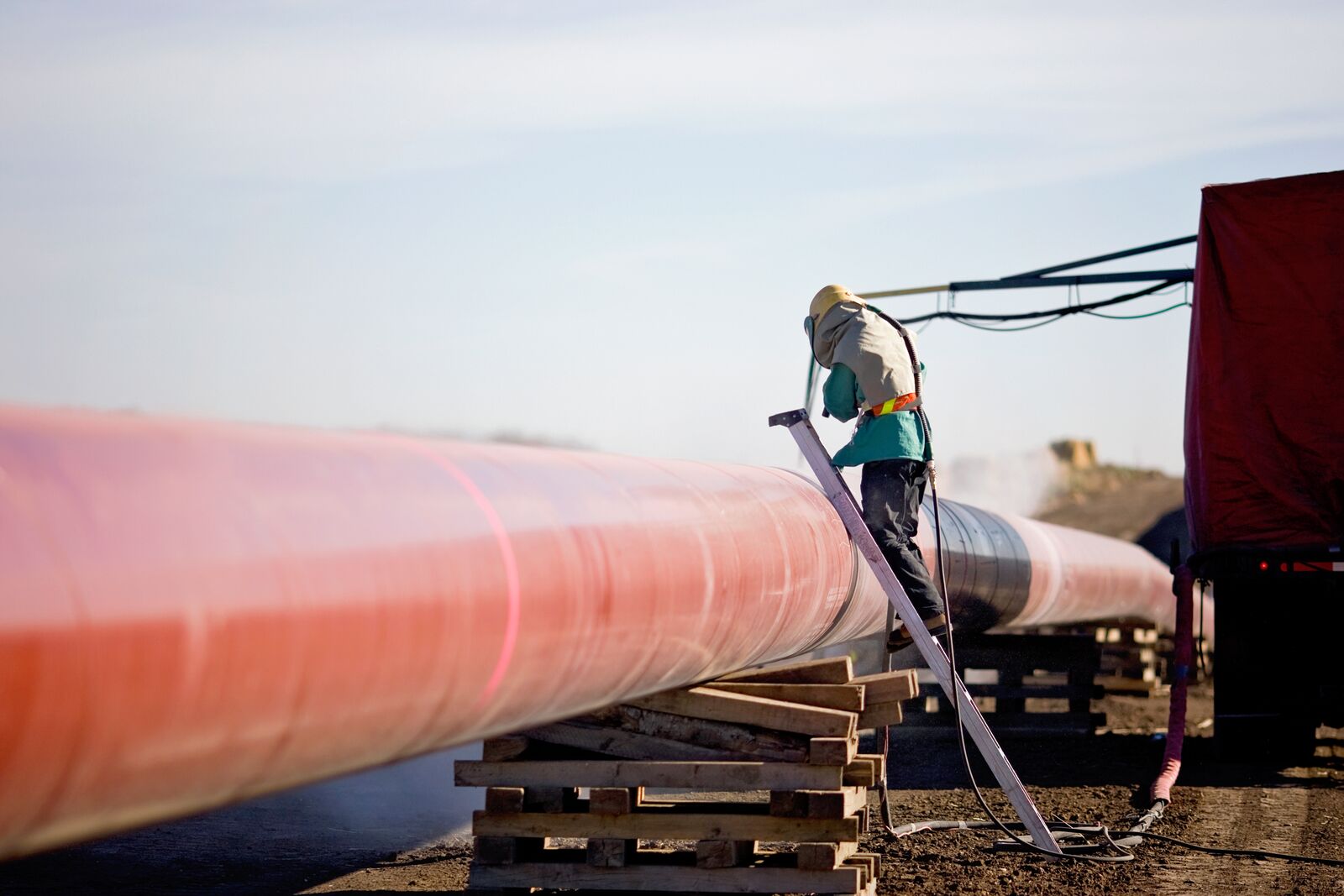Making Sure Durability with Thorough Pipeline Welding Inspection
Making Sure Durability with Thorough Pipeline Welding Inspection
Blog Article
Advanced Strategies in Pipeline Welding Inspection: Innovations and Technologies for Improved Precision and Reliability in Weld Evaluation
The landscape of pipeline welding examination is going through a substantial transformation, driven by sophisticated strategies that promise to improve both precision and reliability in weld evaluations. Developments such as computerized inspection systems and advanced imaging innovations are redefining conventional methods, while non-destructive screening methods guarantee product honesty is maintained. As these innovations advance, they not only raise flaw discovery rates however also enable much more reliable maintenance approaches. Nevertheless, the implications of these improvements extend past instant benefits, increasing critical concerns regarding future methods and requirements in the market.

Value of Weld Evaluation
Ensuring the integrity of pipe welds is essential to the overall security and integrity of commercial systems. Welds work as the structural foundation of pipelines, which transfer a range of liquids under varying stress. Problems in welding can result in tragic failures, resulting in not only considerable economic losses however additionally possible environmental catastrophes and risks to public security. Consequently, strenuous evaluation of welds is indispensable to the lifecycle of pipeline framework.
The value of weld assessment prolongs beyond simple conformity with governing criteria. It offers as a positive step to identify and rectify blemishes, such as insufficient combination, porosity, or cracks, prior to they intensify into serious concerns. Efficient assessment techniques also add to the durability of pipelines, reducing upkeep expenses and enhancing functional effectiveness.
Additionally, detailed weld inspections foster depend on amongst stakeholders, including regulatory bodies, capitalists, and the communities offered by these pipes. By making sure that all welds fulfill the needed standards, companies can reduce threats and support their track records. In recap, weld assessment is vital not only for functional integrity but likewise for the broader effects it holds for safety and ecological stewardship.
Automated Inspection Solutions
The assimilation of automatic examination systems in pipeline welding has actually transformed the technique to ensuring weld high quality and honesty. These systems utilize advanced robotics and man-made knowledge to conduct assessments that are not just faster but likewise extra consistent than standard methods. Automated systems can cover comprehensive sizes of pipelines effectively, capturing information that human assessors might ignore as a result of tiredness or ecological conditions.
One of the essential benefits of computerized inspection systems is their capability to run in hazardous settings, lowering the risk to human inspectors. They use numerous non-destructive screening (NDT) methods, such as ultrasonic screening and magnetic fragment inspection, to assess weld integrity without compromising the structure. The data collected is refined in real-time, allowing for prompt feedback and punctual rehabilitative activities when issues are recognized.
In addition, automated systems promote the standardization of examination procedures, making certain that each weld is reviewed versus constant requirements. This not only improves the dependability of results however also simplifies conformity with governing requirements. As markets continue to focus on safety and security and functional efficiency, the role of computerized assessment systems in pipeline welding will definitely broaden, leading the way for extra advanced quality control methodologies.
Advanced Imaging Technologies
Regularly used in contemporary pipeline welding evaluations, advanced imaging technologies have considerably improved the ability to find and analyze weld problems. Techniques such as electronic radiography, calculated tomography, and thermographic imaging provide assessors with high-resolution pictures that reveal sub-surface problems and architectural variances that may be unseen to the naked eye.
Digital radiography makes use of digital sensing units to catch images, permitting immediate evaluation and boosted picture comparison. This results in much faster evaluations and boosted accuracy in determining crucial issues. Computed tomography, on the other hand, my link provides three-dimensional imaging, allowing assessors to visualize complicated geometries and analyze the integrity of welds from several angles - Pipeline Welding Inspection. This deepness of evaluation is indispensable for detecting problems that typical techniques might overlook.
Thermographic imaging uses infrared innovation to identify variants in temperature, identifying areas of possible weakness or stress within the weld. These innovative imaging modern technologies not only enhance problem detection rates however likewise minimize the moment and sources required for pipeline assessments. As an outcome, they play a crucial role in keeping pipe safety and security and dependability, making sure conformity with industry criteria while decreasing operational dangers.
Non-Destructive Testing Methods
Utilizing numerous methods, non-destructive testing (NDT) methods are essential in pipeline welding examinations, permitting the examination of weld integrity without compromising the product's structural integrity. NDT incorporates a variety of techniques, including ultrasonic screening (UT), radiographic testing (RT), magnetic particle screening (MT), and dye penetrant testing (PT) Each approach has unique advantages and applications relying on the certain demands of the inspection.
Ultrasonic testing makes use of high-frequency audio waves to detect internal imperfections, supplying accurate dimensions of weld thickness and integrity. Pipeline Welding Inspection. Radiographic testing employs X-rays or gamma rays to create images of the weld, disclosing interior defects that might not show up on the surface. Magnetic particle screening is effective for identifying surface and near-surface gaps in ferromagnetic products, while dye penetrant screening highlights surface area fractures by utilizing a colored color
Incorporating these NDT techniques right into pipeline welding examinations improves the precision and reliability of weld evaluations, ensuring that prospective failings are recognized early. As industries require greater criteria for safety and efficiency, the duty of NDT in keeping the integrity of welded structures proceeds to be pivotal in pipeline building and upkeep.

Future Patterns in Weld Evaluation
As we look to the future of weld analysis, developments in technology are positioned to reinvent the methods used view for assessing pipeline integrity. The assimilation of expert system (AI) and equipment discovering in inspection processes is expected to boost the accuracy of imperfection detection and anticipating maintenance. These modern technologies enable for real-time information analysis, making it possible for inspectors to recognize potential problems prior to they intensify right into considerable troubles.
Furthermore, using drones furnished with innovative imaging systems is acquiring grip. These aerial assessments can cover vast areas promptly, catching high-resolution photos and information that can be assessed for problems in hard-to-reach areas. This not just improves security yet also boosts why not find out more performance in the assessment procedure.
In addition, the development of wise sensing units embedded in pipeline systems supplies the potential for continuous surveillance. These sensors can detect adjustments in pressure, temperature, and resonances, giving important understandings into the health and wellness of the welds in time.

Conclusion
In conclusion, the assimilation of innovative strategies in pipe welding evaluation substantially improves the accuracy and dependability of weld analyses. Innovations such as computerized inspection systems, progressed imaging innovations, and non-destructive screening approaches play a vital duty in boosting flaw detection rates and cultivating aggressive maintenance techniques. As these technologies remain to progress, they will further ensure the safety and security and effectiveness of pipeline systems, inevitably contributing to the integrity of crucial facilities.

Report this page